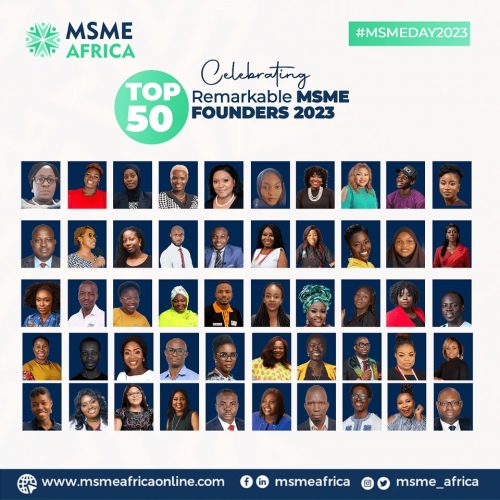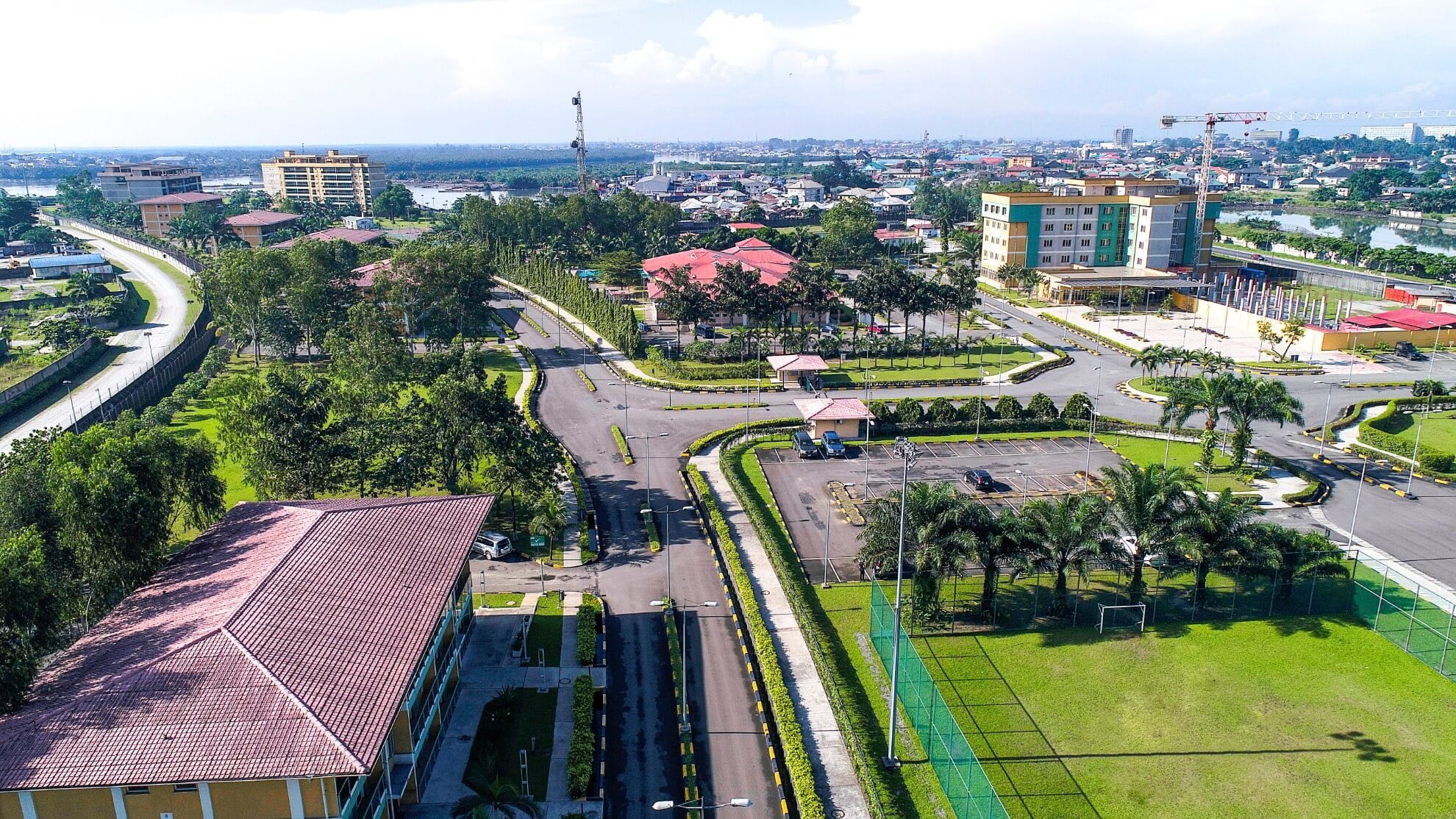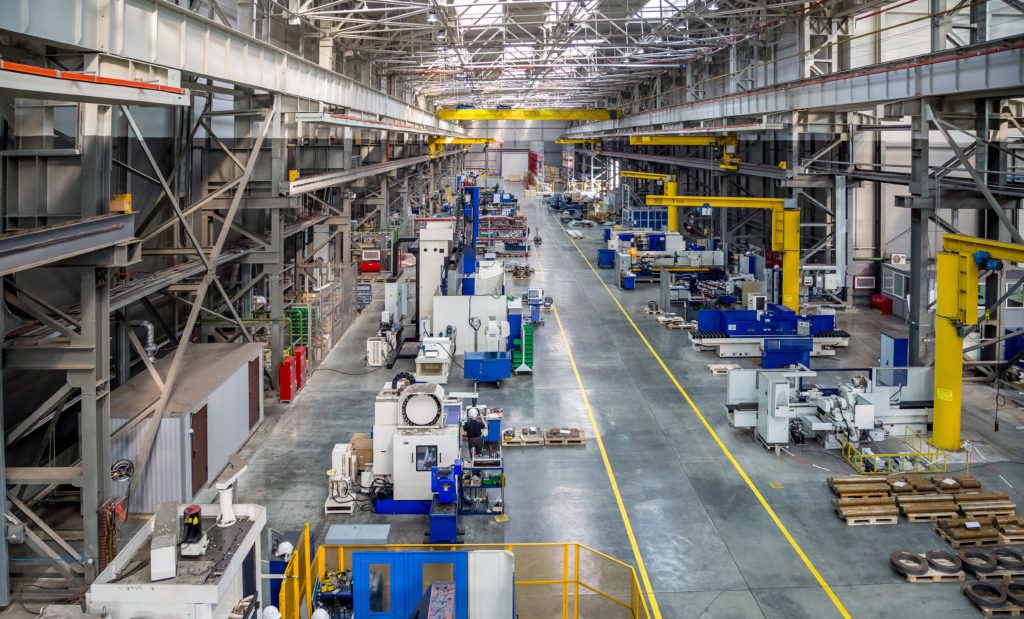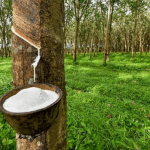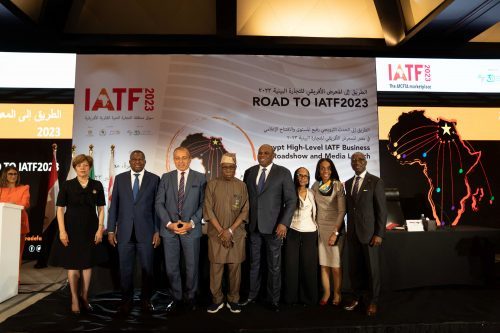I wish to thank you for inviting me to deliver this Annual Adeola Odutola Lecture. It is indeed an honor to be asked to speak at an event named after one of Nigeria’s foremost industry leaders. Chief Odutola, a former President of the Manufacturers Association of Nigeria, was a colossus in the industry.
He established Nigeria’s first industrial manufacturing company, Odutola Tyre and Rubber Company, which manufactured treaded rubber tyres, among several companies and industries.
He gave pride to “Made in Nigeria” products.
I remember my growing up days as a kid, we used to roll old tyres around the dusty roads of our neighborhood, acting as if we at least also had the fortune and pride of “riding on Odutola tyres”.
Chief Odutola was a visionary. It is amazing that that the reforms he called for as President of the Manufacturers Association of Nigeria (MAN), in 1971, are the very same things bedeviling the Nigeria’s manufacturing industry today, five decades after.
In one of his speeches he “lamented the collapse of public utilities, and advise that the private sector should be permitted to compete on the provision of these utilities, he pleaded again, for the encouragement of manufacturers, through a review of the mechanism of the foreign exchange, assistance for manufacturers with infrastructural facilities, and the abandonment of factors which promote uncertainty”. (Ruben Abati and Sesan Ajayi’s book: ODUTOLA. A biography of T. Adeola Odutola, African Leadership Forum 1995):
In the words of Odutola “There are other ancillary services and problem areas worth stressing because they are vital to economic development…(a) inadequacy of industrial plots; (b) water supply; (c) bad condition of roads in many estates; (d) inadequate sanitation and waste disposal services, and (e ) more warehousing facilities.
He foresaw the inherent dangers of Nigeria abandoning the manufacturing sector after the discovery of oil, and said “oil will finish, while industry will not.”
Yes, indeed, Chief Odutola, as you rest in peace, your words resonate loudly, yet, in this hall today, as I start to deliver my Odutola Lecture “Overcoming Binding Constraints to Competitive Manufacturing for Intra-Regional Trade”.
For decades, Africa’s development trajectory has been based on the export of raw materials and natural resources. The continent has abundant natural resources, oil, gas, minerals, metals, agricultural and forest products, and the blue economy.
Estimated at $30 trillion in potential wealth, Africa’s natural resources are enough to make it one of the wealthiest places on earth (Craig Arnold, 2019. How to Turn Africa manufacturing into a high tech powerhouse. World Economic Forum). But tragically and ironically, Africa’s massive natural resources have not translated into wealth.
The reason is simple: a dependency on the export of raw commodities, with very little or no value addition. Put in a stark way: lack of industrial manufacturing. African countries export natural resources and import manufactured products.
It is a race to the bottom, where the only assured commonality, in the face of limited industrial manufacturing, is rising poverty, export of jobs, vicissitudes of volatility of commodity prices, and import dependency.
Hard earned foreign exchange is used to support a high propensity for imported goods, machinery, equipment and raw materials, to support industries.
The low level of industrial manufacturing is at the core of the slow structural transformation of African economies, with dominance of primary sectors. The situation has also been partly perpetuated by the escalation of tariffs on exports of manufactured goods from Africa. For example, export of raw materials attract very low tariffs, but value added products from Africa face steep tariffs.
The economic and wealth divergence between wealthy developed and low income developing countries derives from their differential levels of industrial manufacturing. Wealthy nations export value added manufactured products, while poor or low income nations export commodities with little or no value addition. Low income countries are perpetually at the mercy of price volatility, throwing their economies into perennial swings.
Take the case of agriculture. While the price of cotton will always fall, not so the prices for apparels and textiles. While the price of cocoa will always fall, not so the prices of chocolate. While the prices of coffee beans will fall, not the price of brewed coffee.
No wonder, Africa’s share of the global value chain is a miserly 1.9%, leaving a continent of 1.3 billion people and their economies stuck at the bottom of global value chains.
Africa should therefore wake up and smell the proverbial coffee, and industrialize. That’s why at the African Development Bank, “Industrialize Africa” is one of our High 5 priorities. There is an urgent need for Africa to rapidly diversify its economies, and add value to everything that it produces. Exporting raw materials only leads to vulnerabilities and no nation or region has succeeded by simply exporting raw materials.
While for decades the share of manufacturing in Nigeria’s GDP, has hovered around 7%, the nation has not been able to extricate itself from the comatose of its industrial manufacturing sector to unleash the fulness of its potential.
The performance of the manufacturing sector in the past five years have been poor. Between 2015-2017, the sector declined by -1.5%, -4.3% and -0.2%.
This is in sharp contrast to the dynamic and rapid performance of manufacturing in Asian countries, such as Singapore, Malaysia and China.
While Asian countries have focused on the export of manufactured products, Nigeria’s approach has been on import substitution. The manufacturing sector of Nigeria represents only 3% of total revenues from exports, but accounts for 50% of imports in the country. Instead of being forward looking in expanding the share of the manufactured goods in its total export revenue, Nigeria focuses on the model of import substitution.
Import substitution, while important, is a very restrictive vision. It looks towards survival, instead of looking to create wealth through greater export market and value diversification. The end result is a manufacturing sector that cannot develop nor compete globally, but limits itself to “survival mode, not a “global manufacturing growth mode”.
Nigeria must have a greater ambition for its manufacturing sector, by integrating and rapidly moving up global and regional value chains in areas of comparative advantage; by and by driving greater specialization and competitiveness. A well-developed and policy-enabled manufacturing sector, with an export orientation will spur greater innovation, industrial policies for export market development, and structural transformation of the economy.
Instead of being consumed with the conservation of foreign exchange, the focus would shift to expanding foreign exchange through enhanced export value diversification.
We should be proactive, not reactive.
Let us take the example of Vietnam, a nation at war for twenty years, from the American War, to the Second Indochina War. Despite its challenges, it quickly mimicked successful Asian countries such as South Korea by pushing into relatively complex product categories, and horizontal diversification with the processing of agricultural products.
Vietnam’s exports in 2020 were very well diversified, with electrical machinery and equipment earning it $153 billion; machinery including computers, $23.9 billion; Footwear $23.8 billion; clothing and accessories $15.5 billion, among others. In total, Vietnam’s exports in 2020 was $348 billion.
Malaysia achieved vertical diversification from its agricultural base, of rubber and palm oil, investing heavily in high tech sectors such as electronics. In 2020, its biggest exports by value were in electronic integrated circuits, refined petroleum oils, palm oil, vulcanized rubber and accessories, and solar power diodes or semi-conductors.
Malaysia’s export values in 2020 depended on electrical machinery and equipment $86.6 billion; mineral fuels including oil $25.5 billion; machinery, including computers $20.2 billion; animal, vegetable oils, waxes $13.5 billion; and rubber and rubber articles $11.2 billion, among others. In total Malaysia’s export in 2020 was valued at $234 billion.
By contrast, Nigeria’s exports in 2020 were dominated by mineral fuels, including oil valued at $29.7 billion, which accounted for 89 percent of the exports. Nigeria’s total export value was a mere $33.5 billion. That dollar amount represents a -3.6% decrease since 2016 and a drop of -37.5% in 2019 to 2020. Interestingly, Nigeria’s imports were dominated by machinery, including computers, mineral fuels including oil, vehicles, electrical machinery and equipment, pharmaceuticals, plastics etc.
By contrast, most of these imports are what Vietnam and Malaysia export in abundance. And worse, Nigeria imports mineral fuels, which it should be producing as a leading crude oil exporting nation. It exports crude, it imports refined products — a befuddling irony.
So, what is the take home message here? While Nigeria’s export basket has hardly changed, Malaysia and Vietnam have used aggressive horizontal and vertical industrial manufacturing diversification to move from low-value products to high-value market products. The result is seen in the comparative wealth of the three countries.
While export value per capita is $7,100 for Malaysia and $3,600 for Vietnam, it is only $160 for Nigeria. While Malaysia and Vietnam moved to “global manufacturing growth” creating massive wealth and jobs for themselves, Nigeria remains in a “survival” mode, still unable to substitute the imports of its petroleum products, while being one of the largest exporters of crude oil.
African countries, including Nigeria, have had policies, templates and programs for industrialization and expanding industrial manufacturing for decades. Nigeria’s first National Development Plan emphasized industrialization. There was the National Economic Empowerment Development Strategy (NEEDS) in the 1990s and the Nigerian Industrial Revolution Plan (NIRP) in 2015. They were all good policies.
But there is need to close the huge gap between policy ideas and implementation.
Today, capacity utilization of factories hovers around 40% compared to a desired 70%. The reality, in view of several challenges facing the industrial manufacturing sector, is that firms are moving to neighboring countries, where there is greater macroeconomic stability, enabling environments, and a much better ease of doing business.
To be a manufacturer in Nigeria is not an easy business. You succeed not because of the ease of doing business, but by surmounting several constraints that limit industrial manufacturing.
Today, the major challenge facing Nigeria’s manufacturing is the very high cost and unreliability of electricity supplies. Load shedding and the inconsistent availability of electrical power, have resulted in high and uncompetitive manufacturing costs.
Most Nigerian manufacturing companies self-provide their own energy, with a high dependence on generators, diesel and heavy fuel oil. Their emissions contributions, make them brown industries, not green industries.
It has been estimated by the IMF that Nigeria loses $29 billion annually, 5.8% its GDP, due to a lack of reliable power supply. . Also, that Nigerians spend $14 billion per year on generators and fuel.
A lack of electricity is killing Nigerian industries, something Chief Odutola was concerned about in 1971. According to the Manufacturers Association of Nigeria, industries spent N93.1 billion on alternative energy in 2018, 47 years after Odutola. Today, no business can survive in Nigeria without generators. Consequently, the abnormal has become normal.
Traveling on a road one day in Lagos, I saw an advertisement on a billboard which caught my attention. It was advertising generators, with the bold statement “we are the nation’s number one reliable power supplier!”
Compare that with the situation of South Korea which has diversified its exports into high-value manufacturing. On a trip to South Korea few years ago, I visited the Korea Electric Power Corporation (KEPCO). While being briefed, I was told that the country experiences only 2 minutes of power outage. Not sure I heard correctly, I asked whether they meant 2 minutes per hour, 2 minutes per day, 2 minutes per week or month. The response was quick and resolute: 2 minutes per year.
How then can Nigeria compete with Korea?
Unless Nigeria decisively tackles its energy deficiency and reliability, its industries will remain uncompetitive. There should be massive investments in variable energy mixes, including gas, hydropower resources and large scale solar systems to ensure stable baseload power for industries, , to direct power preferentially to industries, and to support industrial mini-grids to concentrate power in industrial zones.
In addition, we should develop more efficient utilities, reducing technical and non-technical losses in power generation, transmission and distribution systems.
The African Development Bank invests massively in the power sector in Nigeria to support the implementation of the Power Sector Recovery Program. The Bank provided $200 million for the Nigeria Electrification Project, designed to fill the electricity access gap in Nigeria. We have also invested $210 million in the Nigeria Transmission project, to strengthen the grid power evacuation and regional interconnection.
The Bank has launched the Desert to Power initiative, a $20 billion initiative to provide electricity for 250 million people across 11 countries of the Sahel, including Northern Nigeria. Desert to Power will create the world’s largest solar zone. This initiative will draw lessons from successful projects already financed by the Bank, including the Noor Ouarzazate solar PV power project in Morocco and the Ben Ban solar project in Egypt.
Industrial development is constrained by the poor state of transport, ports and logistic infrastructure. It costs $35,000 to export 100 tons of produce from Nigeria compared to just $4,000 in Ghana. About 90% of passenger and freight movements in Nigeria rely on roads but only 18% of the roads are paved. Meanwhile, our seaports are gridlocked.
Recently the Financial Times reported that the congestion at the port in Lagos has become so bad that it could cost more than $4,000 to truck a container 20 kilometers inland – almost as much as it costs to ship it 12,000 nautical miles from China.
Nigerian ports have become revenue generation centers and do not support industrial manufacturing.
I recall when I was Minister of Agriculture, and we were supporting local industrial processing of rice, which ignited the rice paddy revolution and rapid industrial rice milling of locally grown rice in Nigeria.
The then Comptroller General of Customs, upset that local rice production and industrial processing of finished and high quality local rice was taking over a significant share of the market, while being competitive with imports, blurted out that “the Agriculture Minister (myself) has removed the glory of Apapa Port, whose glory was known for rice imports! We used to collect a lot of revenue from rice imports at the Apapa port in its glory days. Now that is no longer the case,” he said.
What an irony.
Here, Nigeria can learn from Morocco. The African Development Bank supported Morocco to develop its Tangier-Med port. The port is unique in that it is an industrial port complex, a platform that has over 1,100 companies. They collectively exported over € 8 billion worth of goods in 2020. Global companies are located there, including Bosch, Daimler, Huawei, Siemens and several others.
Companies located there have allowed Morocco to move up the global value chains, including automobiles, automotive parts, aeronautics, agriculture and food manufacturing, textiles and logistics. Annually, over 460,000 cars are manufactured in the zone for exports. And more interesting, is that the bulk of the human resources to do these are Moroccans.
I took a walk at the Tangier-Med Port. I thought they were on vacation, as I did not see people — just machines, haulers, automated systems moving containers in what looked like a well-synchronized maze, with incredible efficiency. There were no kilometers of trucks waiting to get to the port. We should move away from the usual gestapo approaches of raiding ports, or deploying soldiers to decongest ports, or even vehicular traffic to the ports.
We should not be decongesting the ports in Nigeria, we should be transforming the ports. This must start with cleaning up administrative bottlenecks, most of which are unnecessary with multiple government agencies at the ports, high transaction costs or even plain extortions from illegal taxes, which do not go into the coffers of the government.
The African Development invests heavily in infrastructure. In the past two decades we have invested over $40 billion in infrastructure. In the last five years we have also invested some $10 billion in infrastructure, especially for regional infrastructure, including roads and highways, transport corridors, seaports, airports, ICT infrastructure and regional power transport networks.
The Bank has invested $369.2 million for the highway connecting Enugu to Bamenda in Cameroon, a transport corridor that will serve 11 million people.
The Bank has also invested $49.5 million in the Lekki Toll Road, easing traffic and lowering transport costs. The Bank provided $12.6 million to ECOWAS Commission to support the feasibility study for the Lagos to Abidjan corridor highway expect to help finance the corridor, which carries over 80% of the trade in the region. This will enhance transport connection from Nigeria into the rest of the West Africa region, with one stop border posts to facilitate intra-regional trade.
Ladies and Gentlemen,
The Africa Continental Free Trade Area presents a huge opportunity for Nigeria to drive an export-driven industrial manufacturing pathway. The in-ward looking import-substitution plans that have been pursued over time, ensured that local industries were unprepared when the continental free trade area was established.
Some of the concerns were legitimate, especially the challenge of dumping illegal imports into Nigeria, which has a direct affect on the profitability of local industries. However, illegal imports cannot happen if there is respect for the rule of law. Illegal imports happen because of the porosity of the borders, and ingrained rent seeking and corruption at the borders.
The size of the free trade zone, with collective GDP of $3.3 trillion, makes it the largest free trade zone in the world by number of countries. We must be ready to seize the opportunity and become key player based on our massive potential.
However, for the full impact of the zone to be felt, it should go beyond just being a zone for duty free trading between African countries. Unless Africa countries manufacture more of what is being imported into the zone, simply having high common external tariffs will not stem imports of those manufactures into the zone.
The African Continental Free Trade Area should, therefore, be a manufacturing zone, not just a trading zone. Otherwise, we would have succeeded in creating a well-organized consumption zone for imported raw materials, machinery and equipment from others.
Nigeria should unlock its industrial manufacturing capacities to take advantage of the duty free exports within the zone. Doing so requires decisively tackling the infrastructure and logistics bottlenecks that hamper industrial capacity and competitiveness, establishing and enforcing quality, grades and standards of products, assuring access of industries to land, providing investment relations management to attract investors and trade facilitation.
The drive of the Federal and State Governments towards Export Processing Zones is commendable. While export processing zones provide incentives for exporters, they should rapidly move towards becoming Special Economic Zones, to allow for better clustering of firms, production sharing and learning platforms, for multiple industries.
With the Africa Continental Free Trade Zone, Nigeria will face stiffer competition on the establishment of industrial manufacturing platforms. With rising wages in China and other Asian countries, as they move from labor intensive industries to more knowledge intensive industries, they are out-shoring their light manufacturing industries.
The so called “flying geese model” is on the rise, as these countries outsource their manufacturing capacities to new industrial manufacturing platforms, with lower labor costs, from where they can launch market entry into regional and global markets.
Ethiopia has been very successful with its Special Economic Zones, which have allowed it to attract significant investments in multiple industries, including leather, foot ware, textile, garments and pharmaceutical. Ethiopia’s well established one-stop shops aggressively seek out investors, maintain and strengthen investor-state relations, and use them in turn to attract other investors.
Nigeria has also established the Guangdong-Ogun Free Trade Zone, the Lekki Free Trade Zone and the Calabar Free Trade Zone. The newly constructed $19 billion Dangote petrochemical and fertilizer complex (the world’s largest ammonia plant) in the free trade zone, with a new deep sea port, is exactly the kind of massive infrastructural and industrial manufacturing that is needed to make Nigeria a regional and global player in gasoline, diesel and aviation fuel, and fertilizer value chains.
Greater efforts will be needed in Nigeria to improve coordination failures, inter-agency cooperation, ensure stability of the policy environment, and avoid policy reversals to assure investors.
The future benefits those who anticipate and prepare. Nigeria must look beyond the industries of today into the industries of the future, and develop a plan and capacity to compete in the smart industries that will become the main drivers of global economies. The fourth industrial revolution, based on automation, robotics, artificial intelligence, machine learning, big data computing, 3-D printing and additive manufacturing are rapidly transforming industrial manufacturing. Nigeria must therefore enhance its readiness to transition to digitized and smart manufacturing.
The rising use of robots for manufacturing will pose a challenge for Nigeria’s drive to attract investments. This will be competitive in labor-intensive light manufacturing. As capital costs continue to fall faster than labor costs, developed countries are shifting towards reliance on industrial robots for manufacturing. Competition will become tougher in global value chains with robotics, as they could wipe out low labor cost advantage of Africa.
The rise in robotics in manufacturing is leading to a rethink in the structure of global value chains.
Developed countries with high labor costs have previously out-shored their manufacturing to low-wage countries, for labor intensive manufacturing. With declining cost of cognitive robots, the low labor cost advantage of Africa will be reduced, as these countries are now restructuring their models by re-shoring previously out-sourced manufacturing capacities back to their home countries.
The future of manufacturing will be digital. The global digital economy is estimated to be worth over $16 trillion dollars. The use of Internet of Things (IoT) will raise productivity of labor in manufacturing, deploy smart machines, manufacturing platforms and systems, connecting machines and people, and using machine learning and artificial intelligence to improve speed and efficiencies of complex manufacturing processes.
That future is already here.
It is time to re-imagine the industrial manufacturing in Nigeria.
It is time for rapid investment in digital skills for manufacturing, re-tooling of workers, vocational training, digitization of industrial processes, investments in digital infrastructure and enabling environment.
It is time to prepare students in Sciences, Technology, Engineering and Mathematics (STEM).
It is time for the Manufacturers Association of Nigeria to establish “Industrial Digital Skills Academies” and link them to universities and technology innovation hubs. This will help reskill and retool workers to prepare for the jobs of tomorrow.
It is time for Federal and State governments to make massive investments in digital infrastructure.
That is why the African Development Bank is preparing investments in Digital and Creative Enterprises (I-DICE) program in Nigeria, a $600 million investment to be co-financed with several partners, which will promote entrepreneurship and innovation in the digital technology and creative industries.
It is time to also take bold policy measures to drive the structural transformation of agriculture, with infrastructure and spatial economic policies that will help turn the rural economies of Nigeria away from being zones of economic misery to new zones of economic prosperity.
The key for this is the development of Special Agro-industrial Processing Zones (SAPZs) across the country. These will be zones enabled with infrastructure and logistics, to support private sector food and agriculture companies to locate close to the areas of production, and to process and add value to food and agricultural commodities.
They will be zones to turn cotton into textiles and garments. They will be zones to turn tomatoes into purees and tomato paste. They will be zones to produce and turn milk into cheese, butter and substitute imported milk. They will be zones to drive massive transformation of finished rice products. They will be zones to process palm oil, cocoa and cassava into derivative products that will earn greater revenues.
We are working closely with Federal Government, seven State Governments, the Federal Capital Territory, the Ministries of Finance, Agriculture, Trade, Industry and Investment, Water Resources, and the Nigerian Sovereign Investment Authority (NSIA) on the design of these Special Agro-industrial Processing Zones. They are expected to create at least 1.5 million jobs. The African Development Bank and its Partners have already mobilized $520 million towards the first phase of these Special Agro-Industrial Processing Zones in Nigeria.
A perennial binding constraint facing manufacturers in Nigeria is the unpredictability and availability of foreign exchange. This is not an easy issue to resolve. It is often emotive, yet it must be addressed, pragmatically and structurally. Emotions run economies down, but sound policies make economies to thrive. Multiple exchange rates create opportunities for financial arbitrage, while restrictive access to forex constrains manufacturers import of machinery, equipment and raw materials.
The constrained access to forex has led to dependence on the parallel market, as the forces of demand and supply drive widening gaps between official and parallel market rates. The fall in the price of oil and decline in foreign reserves have further put downward pressure on the currency.
To grow Nigeria’s economy in a transformational way, there is a compelling need to move away from a primary dependence on “managing demand for forex” to “expanding the supply and availability of forex” through greater export-oriented manufacturing.
This will extricate Nigeria from relying only on the export of crude oil for access to forex and the instability that arises from the shocks to global oil prices.
Nigeria, therefore, needs greater export earning diversification to boost its supply of forex to support its industries. It also needs to focus on domestic manufacturing of a larger share of the imports of manufacturers, expand local content, by rapidly moving into processing of raw materials, manufacturing of equipment and machinery, which form 50% of the imports.
To boost manufacturing, access to affordable finance is critical, especially long term financing that matches the investment gestation of companies. PWC (Nigeria) estimates that Medium, Small, and Micro-Enterprises (MSMEs) account for 50% of Nigeria’s GDP. Yet, they receive only 1% of the total credit from financial institutions. They estimated the financing gap for MSMEs to be 617 billion Naira.
Nations that have expanded their industrial manufacturing competitiveness have been those which provide incentives for their companies, especially low-interest rate financing. Just think of the following: interest rates are negative in Japan (-0.1%), 3.9% in USA, 0.25% in China, and 4% in India. But manufacturers in Nigeria face extremely high interest rates at over 15%.
The Bank of Industry, the Nigerian Import and Export Bank, and the Bank of Agriculture, should be significantly capitalized to provide loans at affordable interest rates to manufacturers, especially for small and medium sized enterprises. The deepening of the domestic capital markets will further allow companies to access equity financing they need to grow their businesses.
The African Development Bank’s SME financing facility supports small and medium sized enterprises. By assuring financing to large, medium and small businesses, Nigeria will ensure integration of its supply chains for regional and global markets. The African Development Bank has so far provided $1.73 billion in low interest rate lines of credit to support many financial institutions in Nigeria.
To drive greater investments into Africa, the African Development Bank and its partners launched the Africa Investment Forum in 2018, as a fully transactional platform to develop bankable projects, close deals and fast track financial closure on projects. The Forum attracted $38.1 billion in investor interests in 2018, in less than 72 hours; which was repeated in 2019, when it also attracted $40.1 billion in investment interests, in less than 72 hours as well.
Some of the investments include the $200 million Infracredit project in Nigeria and the $24 billion liquified natural gas project in Mozambique. The 2021 edition of the Africa Investment Forum will be held in Abidjan from 1-3 December, in a hybrid-virtual mode. You are all invited to attend and showcase your investments for expanding industrial manufacturing in Nigeria, for intra-regional trade.
Let’s revamp industrial manufacturing in Nigeria.
With the right policies, investment frameworks, infrastructure, logistics and financing framework, and powered by a highly trained, dynamic and youthful workforce, Nigeria must fully unleash the power of manufacturing.
As Chief Odutola said “oil will finish, industries will not”.
Industrial manufacturing can earn Nigeria ten times what it earns from reliance on oil.
Let’s change our perspective away from simply import substitution, to high-valued export-oriented manufacturing.
The source of Nigeria’s greater wealth will come from having strong manufacturing capacity for competitiveness in regional trade and integration into global value chains.
It is time to change from being inward looking to outward looking.
For outside lies incredible opportunities, yet to be tapped by Nigeria.
Let us be bold. Let us rise with greater ambition.
Let us from the inside prepare for this great future for Nigeria!
A dominant Nigeria in global manufacturing!
Vietnam has done it.
Malaysia has done it.
Singapore has done it.
China has done it.
Helloooo…this is Nigeria’s time!
Let’s make it happen.
Thank you very much.



